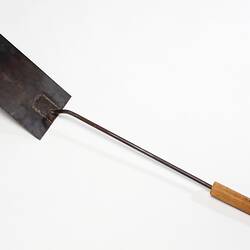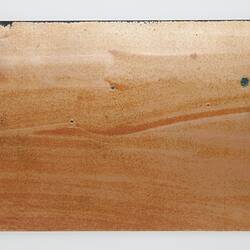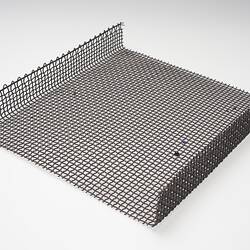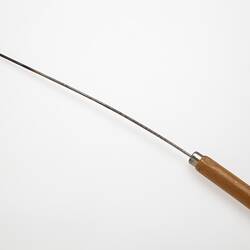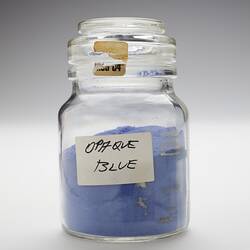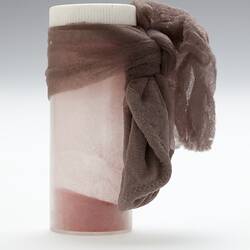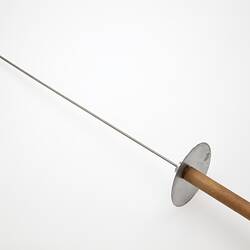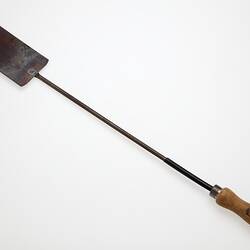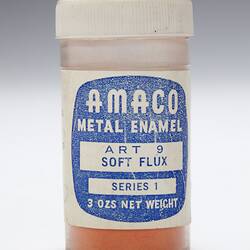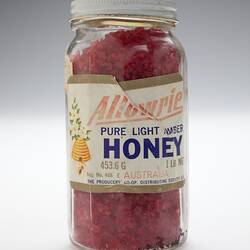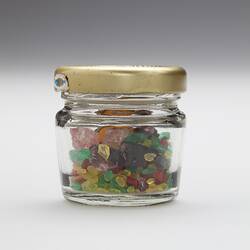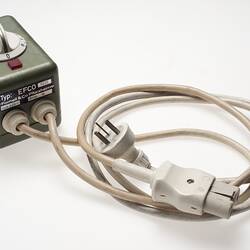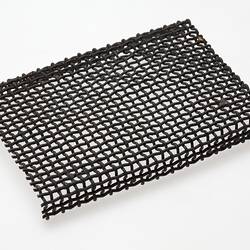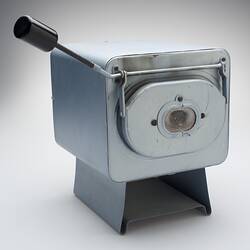Summary
Martha Ash was born in Poland in 1916, survived World War II and the Holocaust and migrated to Australia in 1949 where she became a prolific artist in a range of artistic media.
Martha Ash was born Martha Wagner in Zloczow, Poland on 16 February 1916. Her father died when she was five months old, so her childhood and her artistic endeavour was encouraged and shaped by her creative mother, a milliner and non-practising artist. During World War II, Martha lost her mother, first husband and other family members to the Holocaust and was herself interned in a labour camp until later hidden by some Polish people. In 1944 she met and married concentration camp survivor Feliks Ash and her daughter Helen was born in Crakow the following year. After the War Martha studied philosophy at the University of Lwow in Poland and worked as an interpreter. She was a great linguist, having learned Polish, French, German and Ukrainian as a child, she added Russian during the War and Yiddish later. She lived in Prague, Paris and Brussels before migrating to Australia where she mastered English and Italian.
In 1949, having applied for papers in several countries, the Ash family finally sailed for Melbourne. Feliks, with Martha's assistance, established his clothing business first in the city and later Richmond (which ran until the late 1980s) and their second daughter Eva was born in 1951. Martha undertook a variety of training courses to enhance her artistic practice including tuition from David Boyd, an art course at RMIT, sculpture at the Caulfield Institute of Technology, enamelling and silver smithing at Collingwood Technical College and the University of Melbourne. She also studied glass mosaics on a trip to Venice. Martha joined the Malvern Artists Society where she studied painting, the Victorian Artists Society, and the newly established Jewish Society of Arts in 1962, becoming a vice-president.
Martha worked with a variety of different media throughout her career, including ceramics, mosaics, painting, jewellery and enamelling. Glass was a property that held great fascination for her and she found a way to combine it with many of her media. There was a thematic continuity to her artworks with her Jewish heritage and culture and her own personal experiences providing much of the inspiration for the colours and imagery in her work. Her work was generated from her imagination rather than life in an immediate sense, although her work was rarely abstract. She usually worked without sketches or drawings. Her most significant work is the enormous, six panel, laminated glass mural 'From Creation to Redemption', completed after nearly three years in 1990 and situated on an external wall at Temple Beth Israel in St Kilda. Martha reflected on how her own physical suffering contributed to her creation of the artwork: 'I felt pain and fear again, like I had during the war, and I saw it all in my head: the barbed wire, the gate, the suffering. I couldn't sleep till I'd put it all together. I was too weak to carry the gun, but I was able to draw with my finger exactly where every piece of glass had to go.'
Martha's work is represented in international public and private collections, including the United States, Belgium, France and Israel, and she held more than 20 exhibitions during her lifetime. She was an active and respected member of the Jewish and arts communities, having been a founding member and a president of the Bezalel Fellowship of Arts, an executive governor of the Academy of Arts and Design in Jerusalem and was involved with Melbourne's Jewish Museum. She was known for her generosity, humour, style and resilience, as well as her boundless creative energy. Her husband Feliks died in 1985; Martha died at the age of 80 in Melbourne in 1996.
References: (1994) Deborah Tout-Smith with Anna Malgorzewicz & Margaret Anderson, Contemporary Craft and Cultural Identity Project. Museum Victoria with Monash University History Department; Eve Ash, 'Settler's new world of creativity', The Age, 20 September 1996; Phyllis Alexander, 'The creative spirit amongst us', Temple Time, February 1991; Ken Bandman, A palette of artists, Bezalel, Fellowship of Arts, Melbourne, 1989More Information
-
Keywords
immigration, art, artists, Polish Immigration, Jewish Communities, Jewish Immigration, World War II, 1939-1945
-
Authors
-
Article types




